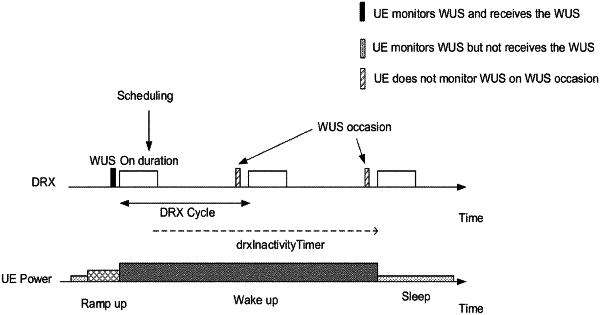| CPC H04W 52/0235 (2013.01) [H04W 52/0216 (2013.01); H04W 72/23 (2023.01)] | 18 Claims |

|
1. A method for a user equipment (UE) monitoring a physical downlink control channel (PDCCH), the method comprising:
receiving a first configuration from a base station to configure the UE with a first search space of the PDCCH, the first search space for monitoring a scheduling signal used for indicating scheduling information;
receiving a second configuration from the base station to configure the UE with a second search space of the PDCCH, the second search space for monitoring a power saving signal used for indicating wake-up information associated with a Discontinuous Reception (DRX) functionality;
in response to receiving the power saving signal while monitoring the second search space, starting a DRX on-duration timer of the DRX functionality according to the wake-up information;
monitoring the first search space of the PDCCH while the UE is in a DRX active time;
not monitoring the second search space of the PDCCH while the UE is in the DRX active time; and
not monitoring the second search space in response to the UE performing a random access procedure, the random access procedure performed in response to one of:
a random access response window running after transmitting a first random access preamble; and
the UE having not received the scheduling signal on the first search space of the PDCCH indicating a new transmission addressed to a Cell Radio Network Temporary Identifier (C-RNTI) of the UE after successful reception of a random access response corresponding to a second random access preamble not selected by the UE among contention-based random access preambles.
|